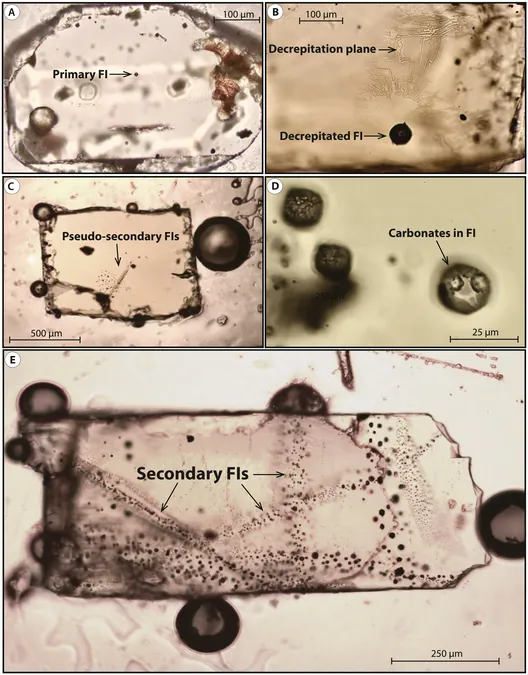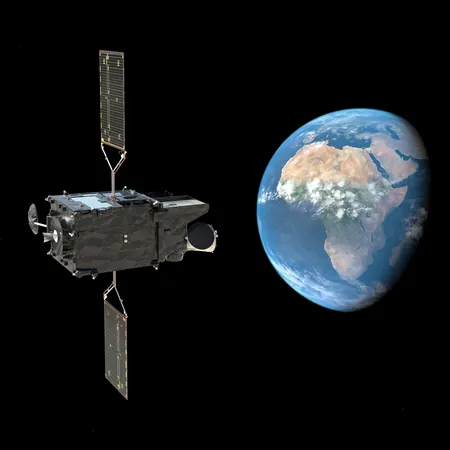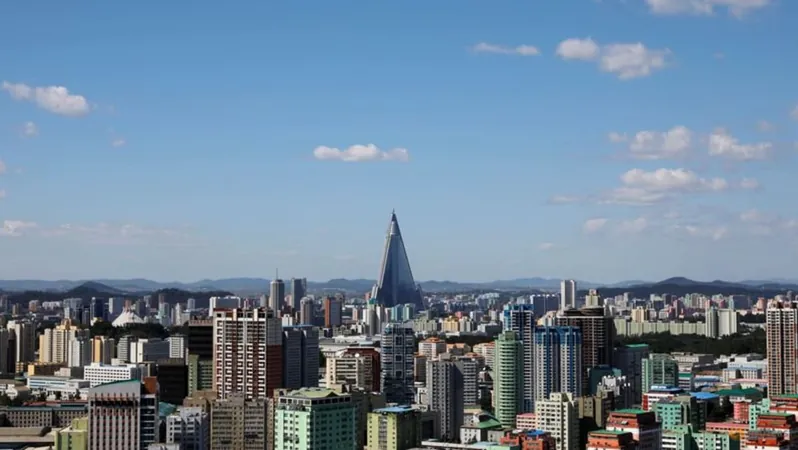
Unveiling the Secrets of Hawaiian Volcanoes with Tiny Gas Bubbles
2025-05-15
Author: Sarah
Revolutionary Research Reveals Magma Mysteries
A groundbreaking study led by scientists at Cornell University has used advanced technology to analyze microscopic gas bubbles trapped in volcanic crystals, shedding new light on the evolution of magma storage in Hawaiian volcanoes. This innovative research redefines our understanding of how these geological giants operate over time.
The Journey of Hawaiian Volcanoes
Hawaiian Islands are constantly drifting northwestward, moving away from a hot plume of magma originating deep within the Earth. Young volcanoes like Kilauea, located at the hotspot, enjoy a continual supply of magma. However, older counterparts like Haleakala, on Maui, face a drastic reduction in magma flow as they move further from this heat source.
A Shift in Understanding Magma Flow
Published in the journal Science Advances, the study reveals that as Hawaiian volcanoes drift away from their hotspot, their magma flow decreases and migrates deeper underground. Lead author Esteban Gazel emphasizes that this finding challenges conventional beliefs, suggesting that eruptions may be fueled by magma stored not just in the crust but also in the deeper mantle.
The Technology Behind the Discovery
This research harnesses a unique method of analyzing fluid inclusions—tiny gas bubbles encapsulated in volcanic crystals. By measuring the pressure at which these bubbles were trapped, scientists can ascertain the depth of magma storage prior to explosive eruptions.
Gazel explains, "Our precise technology enables us to measure depths with remarkable accuracy, previously unattainable due to vast uncertainties." The team developed a customized gas chamber connected to a laser-based Raman spectrometer to achieve this precision.
Insights from Hawaiian Volcanoes
The researchers examined samples from three volcanoes, each representing different stages of volcanic evolution: - **Kilauea**: An active shield volcano displaying magma storage at shallow depths of 1-2 kilometers. - **Haleakala**: In the post-shield stage, revealing two distinct magma storage zones—one at approximately 2 kilometers and another deep within the mantle, ranging from 20 to 27 kilometers. - **Diamond Head**: This rejuvenation-stage vent shows magma held at depths of 22-30 kilometers.
Why This Matters!
Understanding the precise depths of magma storage is vital for grasping the drivers behind volcanic eruptions. Gazel states, "Identifying the locations of magma storage is fundamental for developing accurate models to explain eruptive processes and assess volcanic risks."
A Global Perspective
The implications of this study extend beyond Hawaii, contributing valuable insights into volcanic systems worldwide. Gazel encourages fellow researchers to apply this innovative technology, revealing that they previously utilized the same method to analyze the 2021 eruption in La Palma, Canary Islands.
"My ambition is expansive—imagine applying this technique to every volcano globally," Gazel declares, highlighting the potential to transform our understanding of volcanic behavior universally.



 Brasil (PT)
Brasil (PT)
 Canada (EN)
Canada (EN)
 Chile (ES)
Chile (ES)
 Česko (CS)
Česko (CS)
 대한민국 (KO)
대한민국 (KO)
 España (ES)
España (ES)
 France (FR)
France (FR)
 Hong Kong (EN)
Hong Kong (EN)
 Italia (IT)
Italia (IT)
 日本 (JA)
日本 (JA)
 Magyarország (HU)
Magyarország (HU)
 Norge (NO)
Norge (NO)
 Polska (PL)
Polska (PL)
 Schweiz (DE)
Schweiz (DE)
 Singapore (EN)
Singapore (EN)
 Sverige (SV)
Sverige (SV)
 Suomi (FI)
Suomi (FI)
 Türkiye (TR)
Türkiye (TR)
 الإمارات العربية المتحدة (AR)
الإمارات العربية المتحدة (AR)